A Scottish Military Basket Hilted Sword dating to the American Revolutionary War Period marked for the 42nd Highlanders (Black Watch).
Scottish basket hilted swords of this distinctive military type were made for infantry soldiers serving in Highland Regiments, and are often associated with their service in the French / Indian and Revolutionary Wars in North America due to the numbers of Scottish Highlanders posted to these conflicts. Some swords bear store / rack numbers incised into the pommels and guards and occasionally amongst these marks the specific regiment can be identified. Most are unmarked.


This sword is a member of a group of these swords marked on the pommel with storekeepers marks for the 42nd Highlanders, also known as The Black Watch. The pommel is marked with “42” for the Regiment, with a letter “A” below for the Company and a number “21” below to denote the individual soldier in the Company.
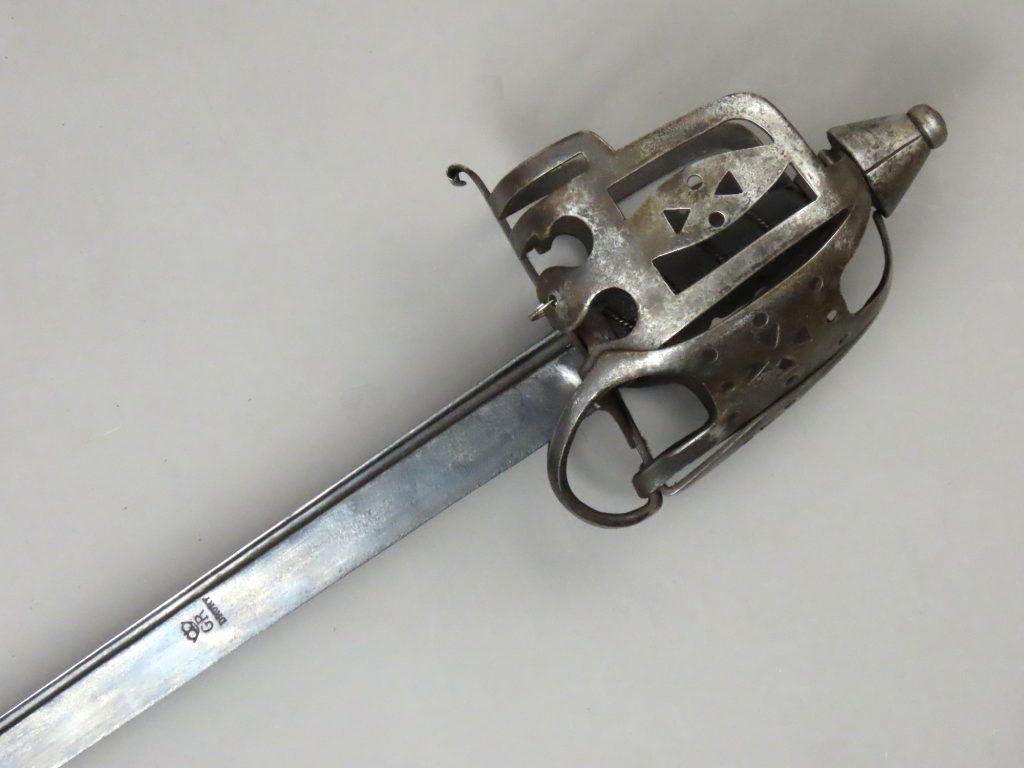

Of the swords that have survived from this time with markings for the Black Watch, all but one known are for “A” Company. It is possible that “A” Company was the company being transported from England to North America in May 1776 on the British transport ship, The Oxford, which was captured by the US Navy brigandine, The Andrew Doria, and was stripped of its weapons and the officers and men removed. Another British transport, carrying a company of the 71st Highlanders, was captured in the same action. In further naval actions later in 1776 more British transports were captured near Boston laden with more men of the 71st.


A disproportionate number of surviving swords of this type have provenances (where they can be reliably traced), from the North West USA, and are probably from these captured transport ships. As more men from the 71st were captured in 1776 compared to the 42nd, more swords from the 71st can be expected to have survived but they were not marked to the regiment, hence the most commonly encountered swords with American provenance are not marked.
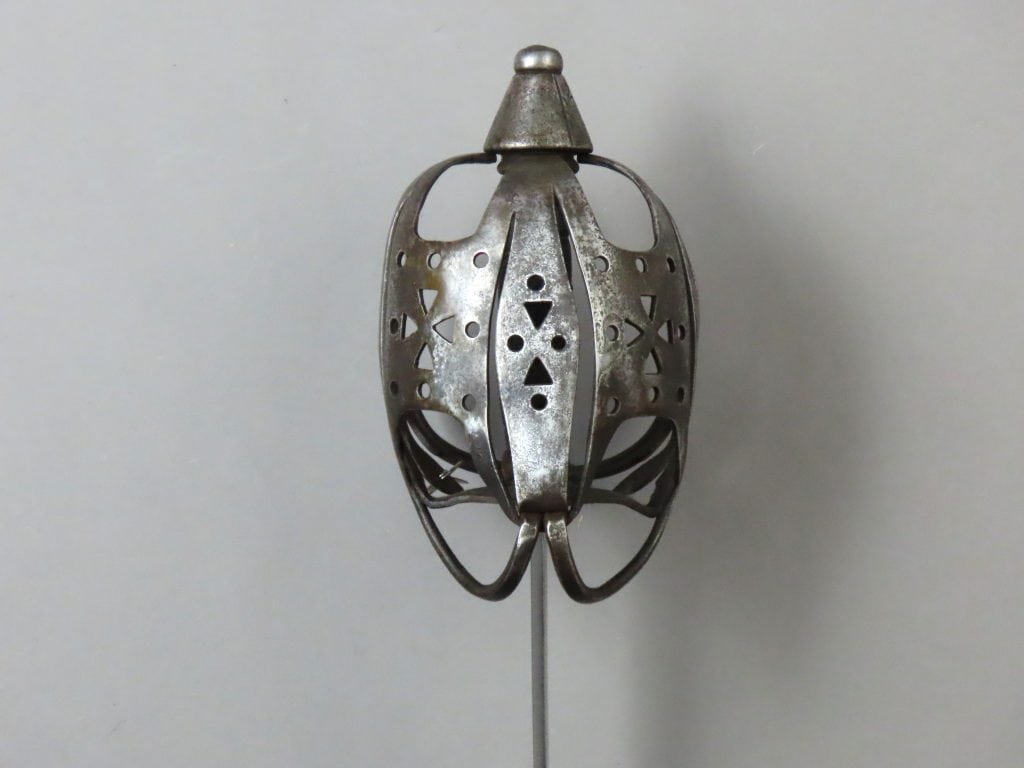
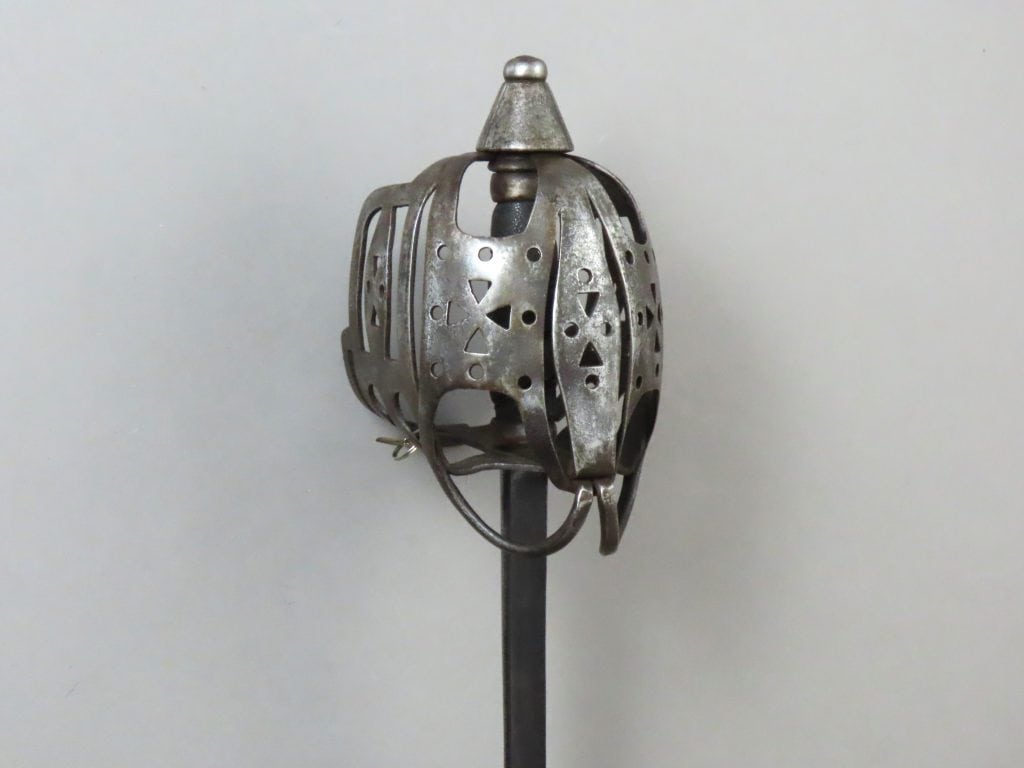
It would seem that many of the Highland swords captured in these actions were absorbed into and put to use by the American army. This would explain why on a significant number of these swords the British Ordnance marks have been intentionally removed from the blades.
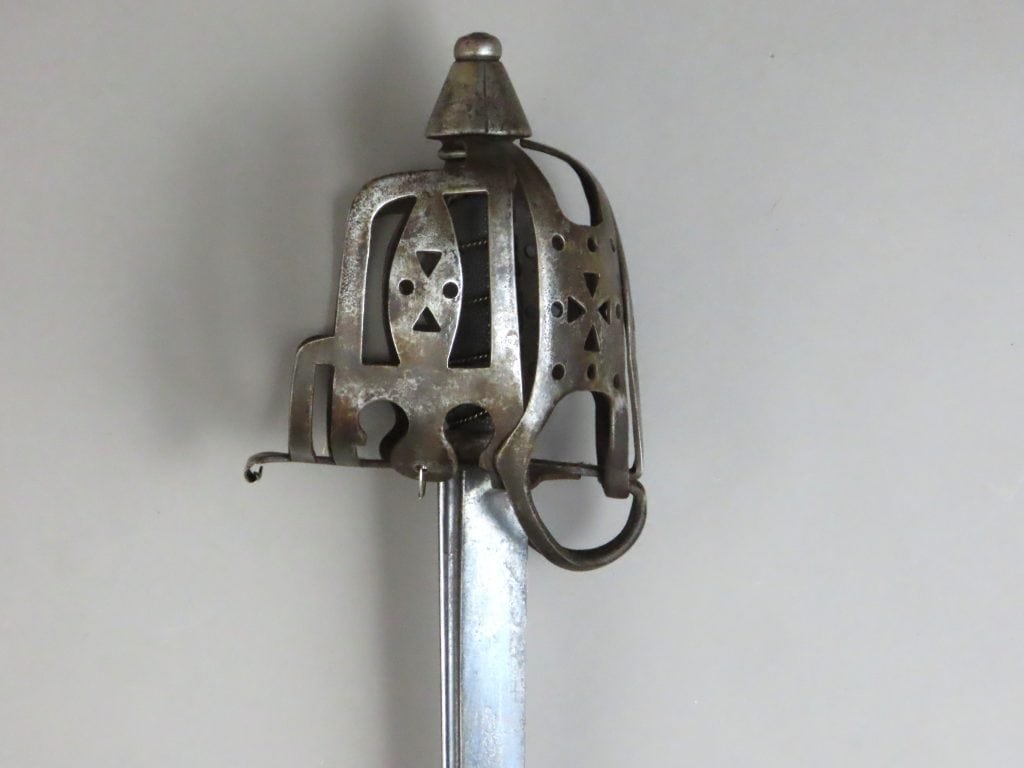

This style of hilt was developed in Glasgow which was already famous for the manufacture of traditional Scottish basket hilted swords since at least the early 17th century. The hilt type was a simplified version of the more usual Scottish basket hilt of the mid-18th century, intended to be cheaper to produce for the limited market of militias recruited from the Highlands intended to enforce order in those areas. The 43rd, later to become the 42nd , the Black Watch, was first formed for this purpose.

Around 1757 production of these swords transferred to England as demand grew due to the increasing numbers of Highlanders being recruited into newly raised Highland regiments in the army. Sword-making was in decline in Scotland and England was better placed to fulfil bigger military contracts in a more cost-effective and timely manner as the American Revolutionary War approached.

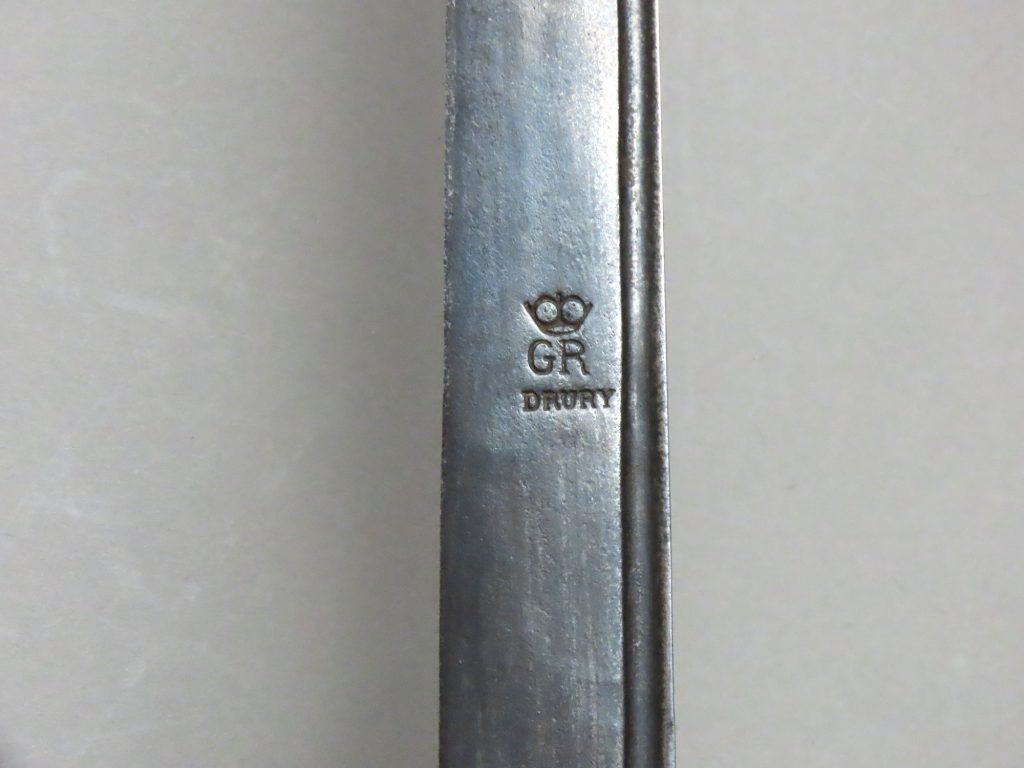
Production fell mainly into the hands of two firms, Drury, and Jeffreys. Jeffreys manufactured until 1771 after which Drury took over the business and produced these swords from then on. Little is known of the exact process of manufacture, but it is thought that the hilts, blades, scabbards, and grips were sourced from Birmingham, Sheffield and London, then the swords were assembled in workshops in London. Drury and Jeffreys generally used similar backsword blades with single fullers and stamped their blades both sides in a similar manner and size with a crown, “G R” beneath and their name below. The sword discussed here, as is the case with the others in the surviving group, is stamped DRURY indicating that the sword was assembled as part of a batch between 1771 and 1776. The Highland Regiments gave up their swords in 1784 and production of this sword type ceased.


The above description borrows heavily from the original research published by Stuart C Mowbray in the December 2023 issue of “Man at Arms”, commencing on page 23, in a paper entitled “Two Dru Drury Basket-Hilted Swords for Revolutionary War Scottish Regiments”. The paper features a sword from the Gary Milan Collection marked to “A” Company of the 42nd for soldier number 33. This sword is almost identical to ours, both having in common some details which were probably shared by other members of this “42nd” group, but not by others which lie outside the group. The incised regimental markings seem to be done by the same hand with similar flecks and nuances in style. Both have similar grips, covered with a similar dark coloured shagreen, with non-typical iron ferrules ferrules mounted top and bottom forged with rounded edges.

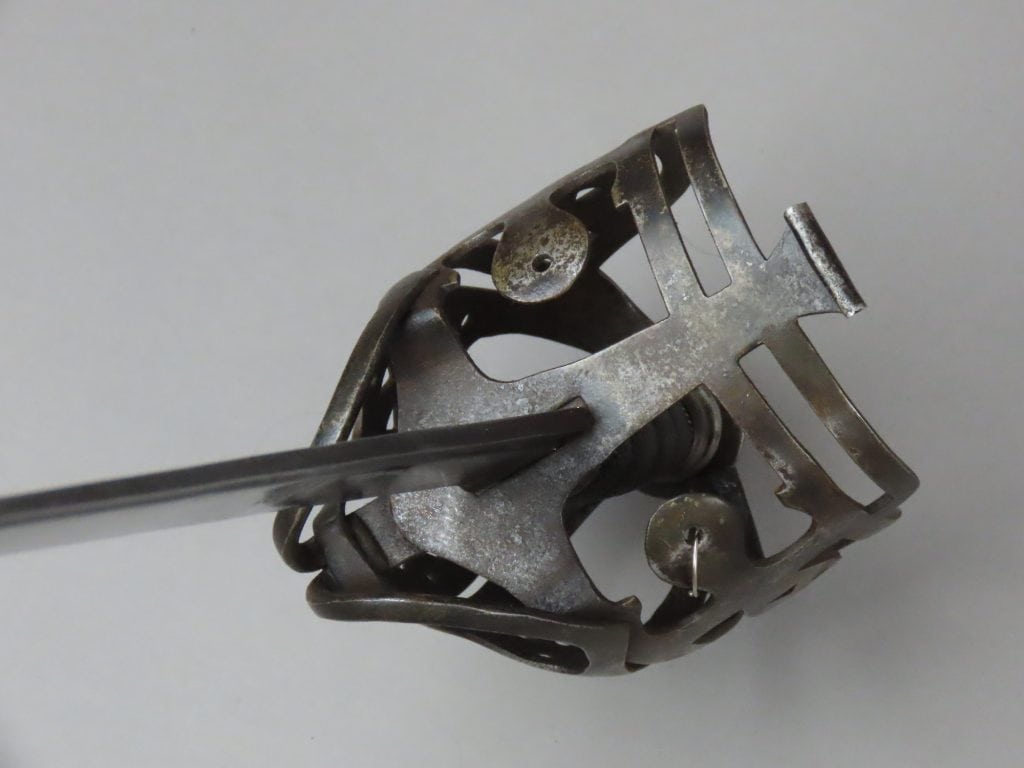
Otherwise, the general hilt type is quite homogenous. The hilts are made from thin flattened ribbon-like iron bars between which primary and secondary guard plates are fixed and pierced with circles and triangles. The pommel is cone shaped with an integral button on top and three grooves which radiate from the pommel button to the pommel edge. The tops of the three arms of the guard are secured under a lipped groove which extends around the pommel base. The grip is made of spirally grooved wood normally mounted with a covering of shagreen and bound with brass wire. Sometimes a leather liner and fringe may be present. Some swords have bare wooden grips and whilst these may be more modern or even period replacements, some may be original.


The single edged tapering blade is 32.5 inches (82.5 cm) long. It has a short ricasso and a pronounced fuller running underneath the blunt back edge for 23 inches on both sides from the hilt. The shoulders of the ricasso sit in a purposely cut rectangular groove underneath the cross bars. The overall length of the sword is 38.5 inches (97.5 cm). An old circular brass collection tag with the number 79 is attached to the hilt.


For a further general discussion of this sword type see Anthony D Darling, Swords for the Highland Regiments 1757 – 1784, Mowbray Incorporated, 1988.
For other examples see Cyril Mazansky, British Basket-Hilted Swords, Boydell Press / Royal Armouries, 2005, pages 129 to 130, and also John Wallace, Scottish Swords and Dirks, Arms and Armour Press, 1970, fig 42, for a sword now in the National Museums of Scotland, collection reference LA 27.
Also see: Stuart C Mowbray in the December 2023 issue of “Man at Arms”, commencing on page 23 a paper entitled “Two Dru Drury Basket-Hilted Swords for Revolutionary War Scottish Regiments”.